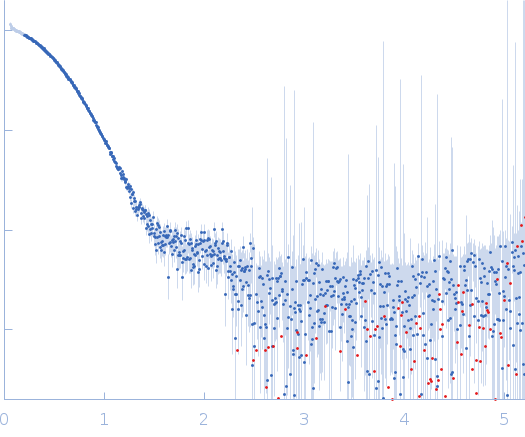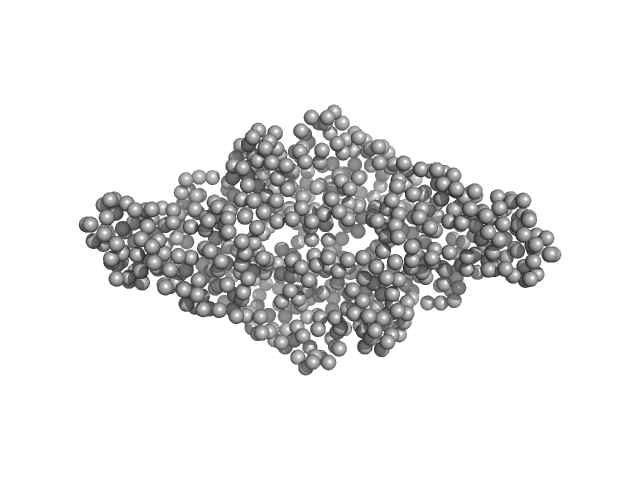|
Synchrotron SAXS data from solutions of dark-state long-linker LOV-activated diguanylate cyclase in 10 mM Tris, 50 mM NaCl, 2 mM MgCl2, pH 8 were collected on the BM29 beam line at the ESRF (Grenoble, France) using a Pilatus3 2M detector at a sample-detector distance of 2.9 m and at a wavelength of λ = 0.099 nm (I(s) vs s, where s = 4πsinθ/λ, and 2θ is the scattering angle). One solute concentration of 0.80 mg/ml was measured at 20°C. 10 successive 1 second frames were collected. The data were normalized to the intensity of the transmitted beam and radially averaged; the scattering of the solvent-blank was subtracted.
Under non-actinic condition (orange light)
|
|
 s, nm-1
s, nm-1
